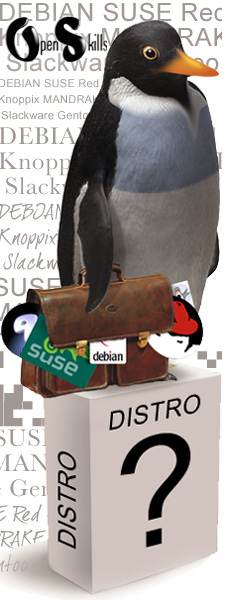|
Linux, a Babylon of [*]nix delirium:
- More than 350 distributions, made in 51 different countries, collecting thousands of software projects.
- Customized for different hardware: workstations, laptops, servers, mainframes, network appliances, embedded devices, handhelds
- Tailored for multimedia stations, business desktops, system recovery, firewall, network probes, streaming stations...
- Provided in different forms: CD Roms, Floppy, Network Installation, USB and Flash cards.
- Compiled on different platforms: Intel compatible 32 bit (ix86) and 64 bit (ia64), PowerPC, sparc, alpha, motorola 68000, i390...
In this apparent chaos, there's still logic and order (much more than what you could expect):
- There are few major distro, from which others are derived: Debian, RedHat, Knoppix, Slackware, Mandrake, SUSE, Gentoo
- They use a common background of GNU and Open Source software and tools
- They share a Filesystem Hierarchy Standard
- [You can use, learn and know just one of them]
- And, most of all, they're always a Wonderful Unix KISS
Our focus on The Big Ones:
|
